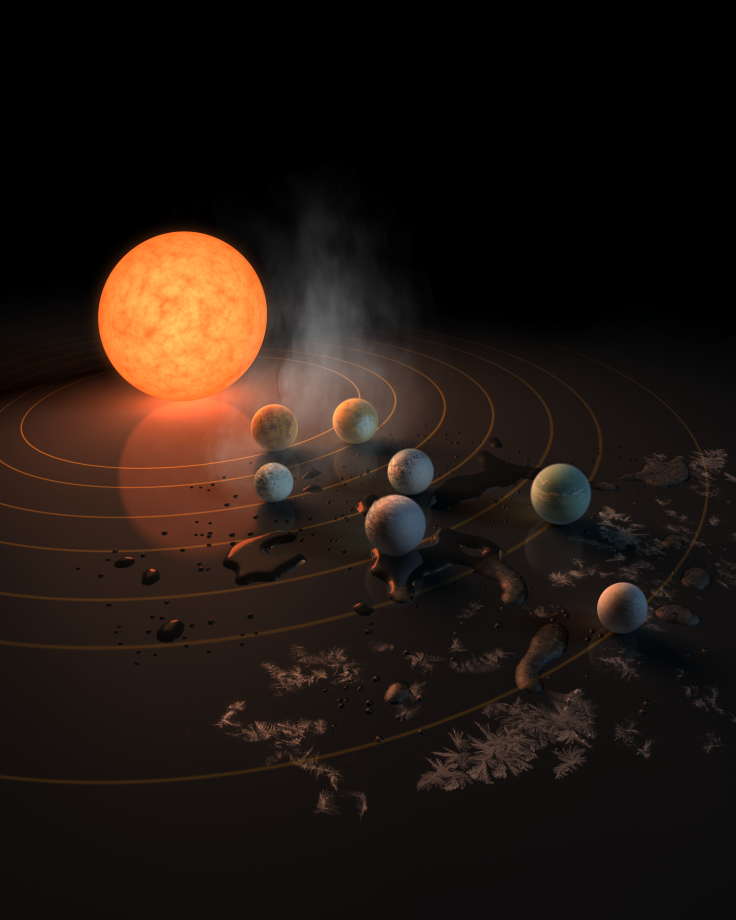NASA Trappist Discovery Announcement: 40 Light Years Away, Earth-Size Planets That Could Have Water Found

Seven Earth-sized exoplanets have been discovered orbiting a single star roughly 40 light-years (235 trillion miles) from Earth, three of the planets are within the “habitable zone” and likely have water, NASA officials announced Wednesday.
“The discovery gives us a hint that finding a second Earth is not just a matter of ‘if,’ but ‘when,’” said Thomas Zurbuchen, associate administrator of the Science Mission Directorate at NASA in a conference Wednesday.
Using the Spitzer Space Telescope, scientists were able to find these planets, first locating two which lead them to look for more. The infrared telescope Spitzer that was launched in 2003 was ideal for this search because the TRAPPIST-1 star the planets surround gives off more infrared light than visible light.
Data collected from the telescope allowed scientists studying the planets to measure the sizes of the planets and subsequently estimate the masses and densities of size of those planets. Based on the measured densities the planets are likely to be rocky, according to NASA.
These 7 Earth-sized planets were seen by @NASASpitzer around a nearby, ultra-cool dwarf star called TRAPPIST-1: https://t.co/G9tW3cJMnV pic.twitter.com/Z6gvaH96Tz
— NASA (@NASA) February 22, 2017
There are a lot of questions researchers have from the observations they’ve been able to make so far. They suspect the planets may be tidally locked, meaning one side of the planet is constantly facing the star, and they may be so close to one another that if a human were to stand on one of the planets, they would be able to make out features of the nearest planet to them.
© Copyright IBTimes 2024. All rights reserved.




















